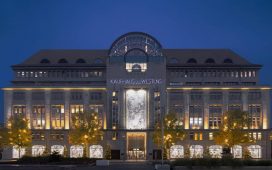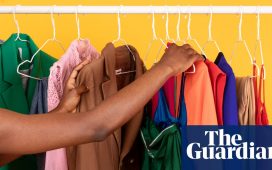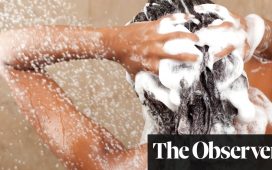The stigma
against second hand apparel and footwear is quickly becoming a thing of the
past: according to a recent report by resale platform ThredUp, the
market has grown 21 times faster than first hand fashion retail over the
past three years and is expected to grow from 24 billion US dollars to 51
billion US dollars in the next five years, in the United States alone. That
means the secondhand market will be 1.5 times bigger than fast fashion by
2028, when previously-owned items are forecasted to account for an average
of 13 percent of American closets.
The market is so promising companies working in this space have been
receiving significant investments. ThredUp raised 175 million US dollars in August,
while Neiman Marcus acquired a minority stake in Fashionphile, a
resale website for luxury handbags, accessories and jewelry. Similarly,
Farfetch acquired sneaker resale platform Stadium Goods before launching its very own resale platform for
designer bags.
But they are not the only ones. Zalando, the European fashion
marketplace, opened a pop-up store in Berlin earlier this year to sell
used fashion items purchased from customers of Zalando Wardrobe. Similarly,
H&M has announced an ecommerce trial of second hand sales
for its & Other Stories brand.
Looking to get a behind-the-scenes peek at the segment and where it is
headed, FashionUnited is interviewing some of the most prominent players in
fashion resale around the world. Make sure to drop by our website every
Tuesday.

Read the previous interviews in this series:
This week we’re speaking with Allison Sommers, Director of Strategic
Initiatives at TheRealReal, the first startup in the new wave of luxury
consignment platforms. Founded in 2011 by Julie Wainwright at her kitchen
table, the company is now considered one of the most successful
marketplaces for second hand luxury items. With over 1,700 employees and 10
million members, The RealReal operates an online platform shipping to 60
countries, three retail stores in New York City and Los Angeles, and 11
luxury consignment offices across the US.
After having raised 115 million US dollars last year, a deal which
valued it at 745 million dollars, The RealReal filed for an IPO in June, raising over 300 million US dollars.

Brand partnerships are part of the secret of The RealReal’s success, the
most well-known of which being Stella McCartney. Since 2017, people who
consign a Stella McCartney item at The RealReal receive 100 US dollars in
store credit to shop at all Stella McCartney stores worldwide. The idea is
to extend the life cycle of products, keeping them out of landfills. “The
partnership with The RealReal created an easy and impactful solution for
our customers to participate in a circular economy”, said McCartney in a
statement upon announcing the renewal of the partnership in January. There
were certainly enough reasons to keep the collaboration going. According to
the RealReal, the first year of the partnership saw consignments of Stella
McCartney items increase by 74 percent.
Now, the company is adding another heavyweight to its list of partners:
Burberry. The British label, which came under fire in 2018 for burning
unsold stock as a means to maintain the brand’s image of exclusivity, has
announced earlier this month that all customers who consign Burberry
products at The RealReal will be offered an “exclusive” experience in
select Burberry stores across the US, including British High Tea, champagne
and a personal selection of new Burberry products picked by one of
Burberry’s stylists.
Teaming up with Burberry makes total sense for The RealReal, as the
demand for Burberry items is on the rise on the platform, up 64 percent
year over year. Millennials and Generation Z are driving this growth,
attracted by Riccardo Tisci’s flirtation with streetwear, but older
generations continue to invest in the label’s signature trench coat, whose
resale value is about 1.5 times higher than other trench coats.
Sommers is the one responsible for scoring such strategic partnerships
for The RealReal. She joined the company in 2015 to lead its brand
collaborations, sustainability strategies and retail marketing.
FashionUnited spoke with her about the growth of the resale market, the
collaborations with Stella McCartney and Burberry, and what the future
holds for the now publicly traded company.

In your view, what are the main factors driving the growth of the
fashion resale market?
Fashion is one of the top-polluting industries in the world. According
to Ellen MacArthur Foundation, one garbage truck’s worth of textiles is
landfilled or burned every second. Our customers are becoming increasingly
aware of this negative impact and the vast majority tell us sustainability
is an important reason they shop and consign with us. Sustainability is a
big part of why 32 percent of our customers are shopping The RealReal as a
replacement for fast fashion. We’re also seeing customers becoming more
savvy. They’re checking resale value on our site before making luxury
purchases in the primary market, investing in items with high resale
value.
How do you see the future of the resale market and The RealReal’s
position in this market?
We’ve really only just begun. As more and more consumers continue to
recognize resale as a smart, sustainable alternative to shopping fast
fashion, it will only continue to grow. I also see resale becoming a
built-in part of the luxury fashion ecosystem as brands continue to embrace
it.
We’re well positioned in the market with our focus on luxury goods that
retain value over time and are made to last, as well as the expert services
we offer. We also see the growth of conscious consumerism benefiting us and
helping drive the circular economy.
What can we expect from The RealReal in the near future, in terms of
partnerships?

As brands increasingly warm up to the idea of resale, we’re having more
conversations about partnerships to create a circular economy in fashion.
Brands are now realizing that we fuel the primary market. Our consignors
are excited to go back and buy new luxury, because they’ve experienced it
has resale value. And they’re generating newfound income to shop by
consigning with us. It’s full-circle.
How did the partnership with Burberry come about? Did The RealReal
approach Burberry or the other way around?
We’ve seen more primary market players looking to the secondary market
to help extend the discovery, reach and covet-ability of their brands. When
Burberry sought a partnership with us, it was not only an endorsement of
resale, but an indicator to other brands that circularity and resale are
important parts of the fashion ecosystem.
Burberry was heavily criticized last year for destroying unsold stock.
Following the outcry, the brand has pledged to stop the practice. Does The
RealReal intend to work together with Burberry to address the problem of
unsold products?
Right now our partnership is focused on promoting a more sustainable
future for fashion by encouraging customers to extend the life of their
products and raising awareness of the environmental benefits of resale.
Speaking of the environment, The Real Real is the first resale company
to join the UN Fashion Industry Charter. Can you tell us more about what
the company is doing in terms of sustainability?
We were very excited to be the first luxury consignment company to join
the UN Climate Change’s Fashion Industry Charter for Climate Change. We’ve
been rooted in sustainability since day one, so it was natural for us to be
an active participant in actionable conversations about reducing fashion’s
impact.
Our customers, regardless of age, care about sustainability. We wanted
them to understand the positive impact they have on the environment through
resale, so we built a first-of-its-kind Sustainability Calculator. It
measures the water, energy and greenhouse gases offset by extending the
life of clothing instead of producing new. Since January 2012, we’ve offset
329 million liters of water with the help of our consignors.
The RealReal is an example of a digitally-native startup which has
transitioned from clicks to bricks. Can you tell us more about the decision
to enter physical retail?
We’ve found that the stores are a great way to engage people in luxury
consignment. By delivering a luxe shopping and consigning experience in a
physical store setting, we’re able to attract and introduce many
first-timers to The RealReal. The in-store business has also brought our
brand to life. We’re able to connect our community directly with experts
for consignment drop-offs or valuation meetings, and customers can see and
try-on our pieces in-person.
Any plans to open more stores?
Absolutely. Brick-and-mortar stores will continue to be a focus for us
and we plan to open more in the future.
Chanel filed a lawsuit against The RealReal last year, accusing the
company of selling fake Chanel items. How does the company prevent
counterfeit goods from reaching its platform?
Unlike most resale companies, The RealReal takes possession of all items
and physically evaluates every one to authenticate it. All items are put
through a thorough, brand-specific authentication process by The RealReal’s
trained team of luxury experts before they are accepted for consignment.
The RealReal has more than 100 gemologists, horologists and brand experts
on staff, as well as hundreds of additional trained authenticators.
Some people argue resale platforms hurt luxury brands’ image of
exclusivity. Birkin bags, for example, are no longer unattainable, as
resale websites offer hundreds of them. What do you think about this line
of reasoning?
When we partner with luxury brands we’re not only looking to drive
consignment and extend the life cycle of items but also generate more
awareness for the designer brand. I think we’re helping to extend the
discovery, reach and even “covet-ability” of their brands. Strong resale
value can strengthen the brand as a whole. We’re seeing that consumers
shopping retail in the primary market want to know the resale value of
designers and items before they make a purchase. The mindset has changed
and they are thinking about the return on investment for when they
eventually consign it. We believe that when consumers see there’s a strong
resale value in the secondary market, they’re more likely to purchase those
items/brands in the primary market.
Next Tuesday: Thomas Plantenga, CEO of Vinted
Pictures: courtesy of The RealReal, The RealReal Facebook














